Disclaimer: This blog post contains affiliate links. If you make a purchase through these links, I may earn a small commission at no additional cost to you. Learn More. Thank you for supporting our garden community.
Growing Grapes on a Fence: Transform Your Space into a Vineyard
Last Updated: August 6, 2024
Imagine stepping into your backyard and being greeted by a flourishing vineyard, with luscious grape clusters hanging from a beautiful fence. Growing grapes on a fence is a captivating and space-efficient way to add both beauty and functionality to your garden or outdoor space. In this comprehensive guide, we will delve into the world of growing grapes on a fence, covering everything you need to know to successfully cultivate these delicious fruits.
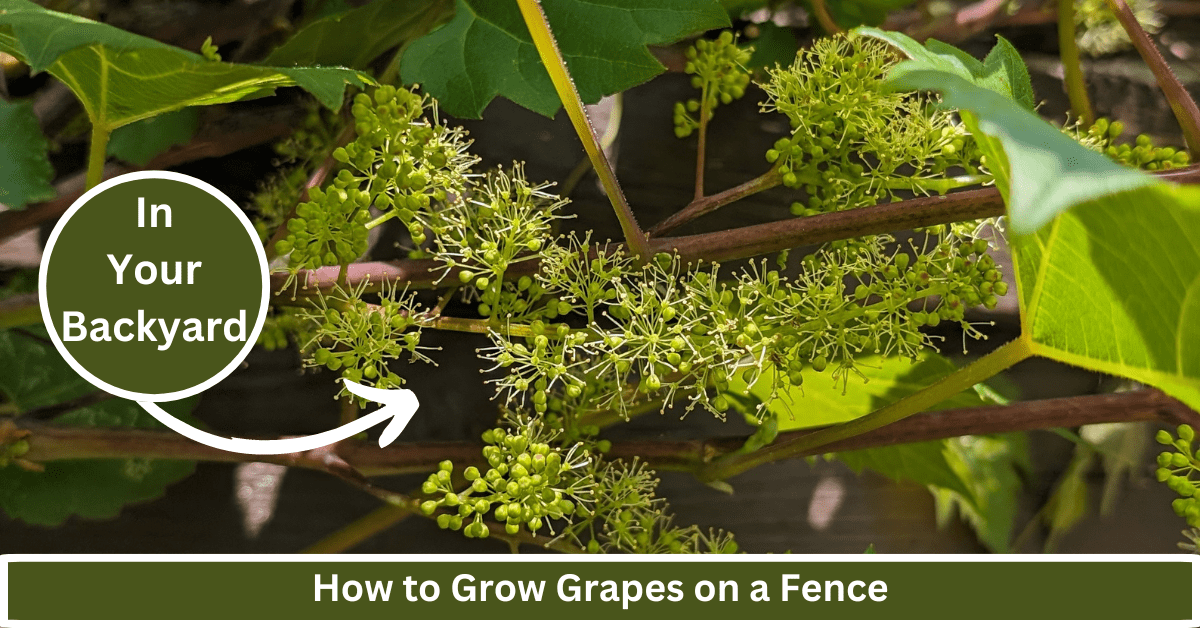
Grapes are typically grown on their own trellis. However, if you are limited on space, growing grapevines on your backyard fence can help you save space in the garden.
I did this in Southern Ontario with a wild grape variety. It has weaved itself in and out of the fence cracks. It also takes advantage of the top beam of the fence, which is where the most sunlight hits.
Growing Grapes on a Fence
Here’s what you’ll get from this post:
- Space-Efficient Vine Cultivation: You will learn how to utilize your backyard fence as a support structure for growing grapevines, which is a space-saving alternative to the traditional trellis system. This approach allows gardeners with limited space to still enjoy the benefits of a personal vineyard.
- Ideal Conditions and Varietal Selection: This guide includes advice on choosing the right location with ample sun exposure and well-draining soil, as well as suggesting grape varieties best suited for fence-growing, which are known for their adaptability and ability to latch onto structures with their tendrils.
- Planting and Maintenance Techniques: This post offers guidance on planting grapevines at an appropriate distance from the fence for optimal growth and air circulation, along with training and pruning methods to ensure the vines attach properly to the fence and maintain healthy, productive growth.
- Harvesting and Vineyard Upkeep: You will learn the signs of when grapes are ready to harvest and how to do so without hurting the plant. Additionally, there’s advice on the ongoing care of grapevines, including the importance of pruning and providing adequate support to prevent damage to the fence due to the weight of the vines.
Choosing the Right Location and Fence
Before embarking on your grape-growing journey, it’s crucial to select the right location and fence. Choose a sunny area with fertile, well-draining soil. Add compost or manure to the soil, along with a good-quality organic fertilizer.
When it comes to choosing the right fence for growing grapes, certain factors should be considered. Opting for a fence with sturdy construction and durability is crucial to support the weight of the grapevines and their clusters.
- A strong, solid wooden fence or a chain-link fence with metal posts are popular choices due to their ability to withstand the pressure and weight of the vines.
- These types of fences also allow for easy attachment of the necessary support structures, such as wires or trellis systems.
Additionally, it’s important to select a fence that offers good sunlight exposure to the grapevines, as they thrive in sunny conditions. Full sun (8+ hours of direct sunlight) is best for growing grapes.
By choosing a fence that combines strength, durability, and suitable sun exposure, you’ll create an ideal environment for your grapevines to flourish and produce an abundant harvest.
Varieties of Grapes for Fence Growing
Consider the grape varieties that are suitable for fence growing. Certain grape varieties, such as the American and European types, are more suited for this purpose due to their compact growth and ability to thrive in different climates. Examples include Concord Seedless, Welder Muscadine, and Alachua Muscadine grapes.
All of these varieties can be purchased from Nature Hills Nursery; just click on their name!
These varieties are suited to grow in less-than-ideal conditions, such as those that would exist by growing them along a fence.
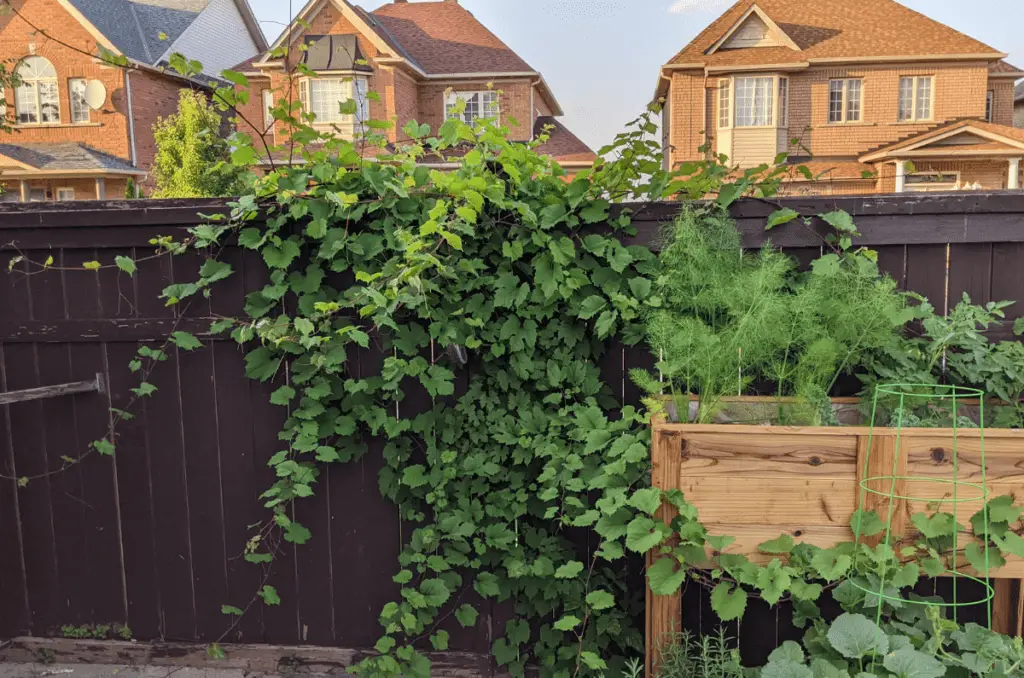
In my garden, I have a wild grapevine, known as the Riverbank grape. This plant grew out of the cracks of the concrete (I know, it’s crazy).
Planting and Spacing
To optimize growth and yield, plant the grapevines about six inches away from the fence, allowing ample space for the vines to spread out. Aim for a spacing of at least six feet between each plant to ensure good air circulation and access to sunlight.
By spacing them slightly away from the fence, you are allowing them to grow along the fence. If you plant the grapevines too close to the fence, they may start to spread out away from the fence in an act of finding more space.
Training Techniques
Training the grapevines is an essential element of growing grapes on a fence. During the first year, allow the vines to grow without pruning, focusing on root establishment. In subsequent years, guide the vines to grow along the fence, using sturdy supports like wires or trellis systems attached to the fence.
- You may have to tie the vines to your fence if you are using a wooden fence. I like to put a nail in the wood so that the tendrils can grab onto it.
Pruning
Pruning is vital for maintaining healthy and productive grapevines. Prune during the dormant season, typically in late winter or very early spring, to remove excess growth and encourage proper airflow. This helps prevent diseases, such as powdery mildew, and improves vine health.
Trained on a fence, the vines can be pruned using either the spur or cane pruning methods, depending on the grape variety and your specific goals. To learn more about pruning grapes, check out this amazing guide about spur and cane pruning by Deep Green Permaculture.
Support and Care
Besides training and pruning, grapevines require proper support and care for optimal growth. Regularly inspect the fence for any signs of damage, ensuring it remains sturdy throughout the growing season.
Also, be wary of the weight of your grapevines. When all the fruit is ripe and all the canes are fully grown, the stress on the fence may cause it to lean or completely fall over. However, if you are keeping up with pruning, this should not be a problem for you.
Additionally, provide the vines with sufficient water, especially during dry periods, and consider applying a layer of organic mulch around the base to retain moisture and suppress weeds.
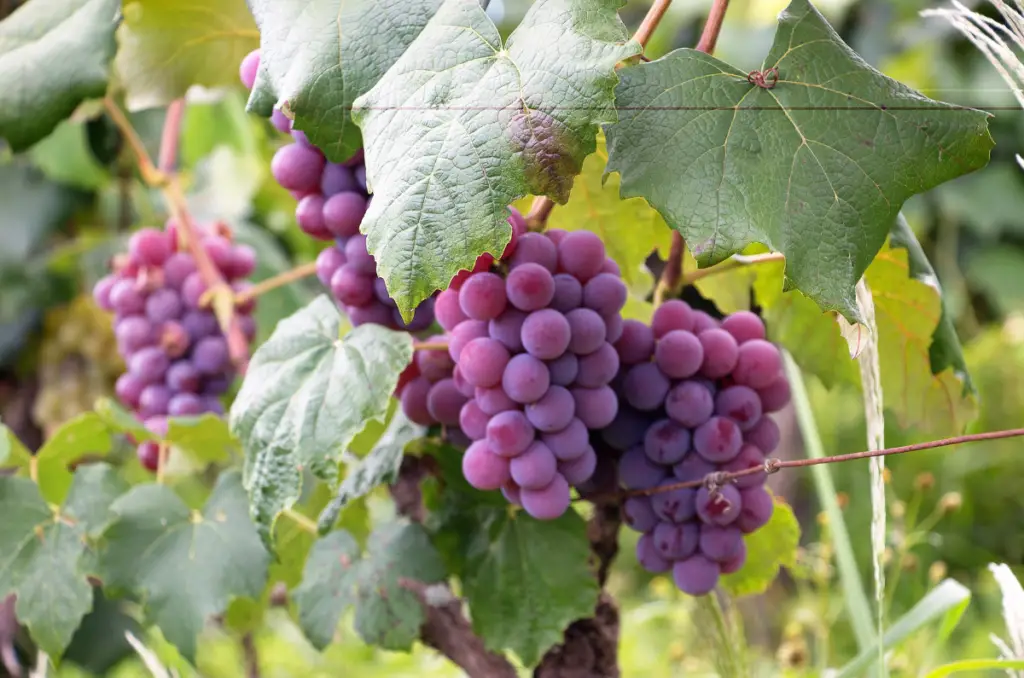
Harvesting and Enjoying the Fruits of Your Labor
With proper care, your grapevines will eventually reward you with an abundant harvest. Grapes are ready for harvest when they reach their full color and sweetness. Cut the grape clusters from the vines using sharp pruners, being careful not to damage the surrounding vines.
Enjoy the fruits fresh, make wine, or create delectable grape-based recipes. Check out this green grape pie recipe from A Modern Homestead.
Frequently Asked Questions
Grapes are sun-loving plants. They need at least 8 hours of direct sunlight per day for optimal growth and fruit production. The more sun, the better!
Water your grapevines regularly, especially during the first few years after planting and during hot, dry weather. The soil should be moist but not soggy.
A moderate amount of fertilizer can be beneficial for grapevines. Research the specific needs of your grape variety and soil conditions to determine the appropriate fertilizer and application rate. A fertilizer high in potassium and phosphorus, or one specifically for berries, is perfect for grapes.
Grapevines typically won’t produce fruit for 2-3 years after planting. Once mature, they can continue to produce grapes for many years (even 100 years) with proper care.
Even More Gardening Ideas
Here are a few more posts to get the ball rolling in your garden!
Products
For all-purpose organic fertilizers, check out Arber.
To buy organic, non-GMO garden seeds, check out SeedsNow.
For a wide selection of garden plants, check out Nature Hills Nursery.
For gardening equipment, check out Bootstrap Farmer.
Conclusion
Growing grapes on a fence opens up a world of possibilities, transforming your outdoor space into a charming vineyard haven. By following the steps outlined in this comprehensive guide, you can nurture healthy grapevines, ensuring bountiful harvests for years to come. Embrace the enchantment of growing grapes on a fence and savor the delights of these versatile and delectable fruits.
This post was linked to in Simple Life Mom’s Homestead Blog Hop 505, so check them out to learn more!
If you want to learn more about gardening, foraging, nature, and sustainability, check out The Real Gardener on Instagram, YouTube, and Pinterest.
Pin this post for later:
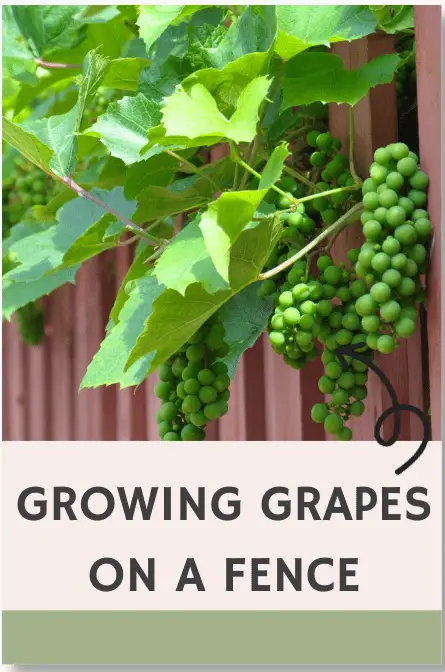

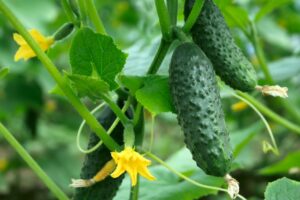

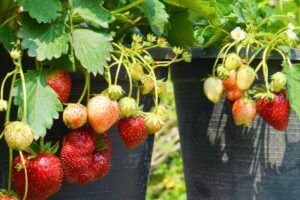
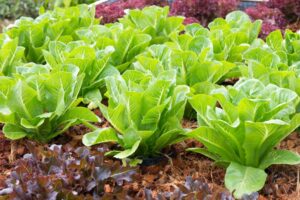


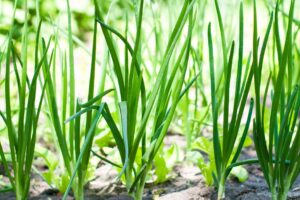
Leave a Reply